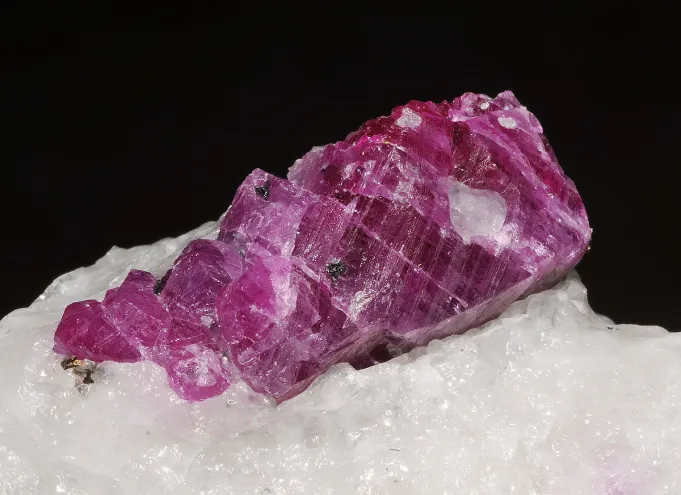
Appearance
Ruby is a red pigment that can have a pinkish-red to deep blood-red hue. The amount of chromium in the crystal structure determines how intense the color is. Ruby crystals often have prismatic shapes with flat basal terminations and a hexagonal crystal structure.
Geographical Distribution
All across the world, rubies can be discovered, but high-quality mines are very uncommon. Asia has the largest ruby reserves; Myanmar (Burma) in particular is noted for producing some of the best rubies in the world. There are also sizable ruby resources in parts of Vietnam, Cambodia, Thailand, and Sri Lanka.
Major ruby deposits have been discovered in Tanzania, Mozambique, and Madagascar in Africa. Rubies are usually found in metamorphic rocks including gneiss, schist, and marble in these places.
Other regions of the world, including Australia, Afghanistan, Pakistan, Greenland, North Carolina, and the United States, have also found ruby resources. But compared to the previously stated locales, these places often have poorer quality and quantity of rubies.
History
Ruby gemstones have been valued since ancient times and are symbols of passion, protection, and wealth. Asian nations have historically placed a high value on rubies. As early as 200 BC, records indicate that rubies were exchanged along China’s North Silk Road.
Metaphysical Properties
It has been related to increased vigor and focus, inventiveness, loyalty, integrity, and compassion.

Chemical Composition
Ruby is a type of corundum (Al2O3) gemstone that shares the same chemical makeup as sapphire and other corundum gemstones. Because ruby’s crystal lattice structure contains trace amounts of chromium, which gives it its distinctive red tint, ruby and blue differ in color.
Uses
Although rubies are most commonly used as gemstones in jewelry, they are also utilized in a wide variety of other industries. Here are a few typical uses for ruby:
- Jewelry: Rubies are highly valued for its intense red hue and resilience, and they are frequently utilized in upscale jewelry pieces including necklaces, earrings, and rings.
- Laser technology: Laser technology uses synthetic rubies, especially for scientific and medicinal purposes. Ruby lasers are utilized for both scientific study in areas like spectroscopy and medicinal therapies like tattoo removal.
- Industrial applications: Ruby is valuable in many industrial applications, including bearings and mechanical seals in pumps and gas turbines, due to its high melting point and strength.
- Watchmaking: High-end mechanical timepieces, specifically the escapement mechanism that maintains the watch’s accuracy of timekeeping, use rubies as bearings.
- Optical applications: Additionally, rubies are utilized in many optical applications, including lenses for cameras and research apparatuses.
Table





